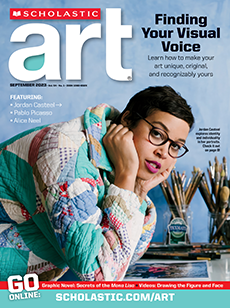Begin painting your final portrait by outlining the large shapes with a light color. Work from the lightest areas to the darkest, building the composition with intention. Use the lightest colors in your palette to create the highlights and the darkest colors to add shadows. Be aware of your brushstrokes. Use thick, textured brushstrokes to paint the big shapes. Then use smaller, more delicate ones to paint the details.
Remember that different types of brushstrokes will evoke different kinds of energy in your composition. Make sure that your brushwork supports the mood you’re aiming to express. Think about facial expressions, shapes, and brushwork as ways to communicate expression.
Tip: Focus on the emotion you want to express instead of trying to technically capture each detail.
